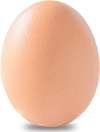Superior Protection&Faster Decomposition & Cost Savings – Food-Grade Sustainable Packaging
The Evolution of Egg Packaging: A Look Back in Time
24 Nov,2025
The Evolution of Egg Packaging: A Look Back in Time
Egg packaging has undergone significant transformation over the years, evolving from simple methods to complex, innovative solutions. As a vital component of the food industry, effective egg packaging not only ensures the safe transport of eggs but also plays a crucial role in marketing and consumer convenience. In this article, we will explore the rich history of egg packaging, the various materials used over time, and the innovations that have emerged to address the challenges faced by producers and consumers alike.
Table of Contents
- 1. Historical Overview of Egg Packaging
- 2. Traditional Packaging Methods
- 3. Modern Egg Packaging Materials
- 4. Environmental Considerations in Egg Packaging
- 5. Technological Advancements in Egg Packaging
- 6. Consumer Trends in Egg Packaging
- 7. The Future of Egg Packaging
- 8. Frequently Asked Questions
1. Historical Overview of Egg Packaging
The history of egg packaging dates back thousands of years. Ancient civilizations recognized the need for a practical solution to transport eggs safely. Initially, eggs were often wrapped in straw or placed in woven baskets. These rudimentary methods, while effective for short distances, were not ideal for longer journeys. As trade expanded, so did the need for better packaging solutions.
In the 19th century, the introduction of cardboard revolutionized egg packaging. Cardboard was lightweight, inexpensive, and easily customizable, making it the preferred choice for egg producers. This innovation marked a significant shift in how eggs were packaged and laid the groundwork for the modern egg carton.
2. Traditional Packaging Methods
Before the advent of modern egg cartons, various traditional packaging methods were utilized.
2.1. Straw and Hay Wrapping
Eggs were often cushioned in straw or hay, which provided a layer of protection against breakage during transport. While effective for local deliveries, these methods posed challenges for larger-scale distribution due to their bulkiness and lack of structural integrity.
2.2. Wooden Crates
Another common method involved using wooden crates. These crates were designed to hold multiple dozen eggs and featured compartments to reduce movement during transit. However, wooden crates were heavy and cumbersome, making them less practical for modern distribution methods.
3. Modern Egg Packaging Materials
The modern era of egg packaging is characterized by advancements in materials that enhance durability, safety, and sustainability.
3.1. Paperboard Cartons
The introduction of paperboard cartons in the early 20th century was a game-changer. These cartons are designed to cradle each egg securely, minimizing the risk of breakage. Moreover, paperboard is recyclable, appealing to environmentally conscious consumers.
3.2. Styrofoam Containers
Styrofoam egg containers became popular due to their lightweight and insulating properties. They provide excellent cushioning, but concerns over environmental impact have led to increased scrutiny of their use.
3.3. Plastic Egg Cartons
Plastic egg cartons have gained popularity in recent years. They are lightweight, reusable, and resistant to moisture, making them ideal for both storage and transport. However, the environmental footprint of plastic remains a concern for many consumers.
4. Environmental Considerations in Egg Packaging
As awareness of environmental issues grows, the egg packaging industry faces increasing pressure to adopt sustainable practices.
4.1. Biodegradable Materials
Biodegradable packaging materials are gaining traction as a solution to reducing plastic waste. Manufacturers are exploring options such as plant-based polymers and recycled paper products to minimize their environmental impact.
4.2. Recyclability and Reusability
Encouraging consumers to recycle and reuse packaging is another strategy being implemented. Many brands are now opting for designs that are easy to recycle, thereby promoting a circular economy.
5. Technological Advancements in Egg Packaging
Technology has played a crucial role in the evolution of egg packaging, leading to safer and more efficient processes.
5.1. Automation in Packaging
Automated packaging lines have streamlined the process of filling and sealing egg cartons, reducing the risk of human error and increasing efficiency. Automation also allows for precise quality control, ensuring that only eggs meeting high standards reach consumers.
5.2. Smart Packaging Solutions
Innovations in smart packaging are emerging, incorporating QR codes and sensors that provide consumers with information about the eggs’ origin, freshness, and handling. This transparency builds consumer trust and enhances the overall purchasing experience.
6. Consumer Trends in Egg Packaging
Consumer preferences are shaping the future of egg packaging.
6.1. Eco-Friendly Packaging Demand
Increasingly, consumers are seeking products with minimal environmental impact. Brands that emphasize sustainability in their packaging are gaining popularity and loyalty among eco-conscious shoppers.
6.2. Convenience and Functionality
Convenience is a key factor in consumer decision-making. Packaging that is easy to open, resealable, and space-efficient appeals to busy households looking for practical solutions.
7. The Future of Egg Packaging
The future of egg packaging lies in continued innovation and responsiveness to consumer demands.
7.1. Innovative Materials
Research into new materials, such as edible packaging or fully biodegradable options, is underway. As technology advances, the packaging industry may see revolutionary changes that further reduce waste.
7.2. Enhanced Sustainability Practices
Brands are likely to adopt more comprehensive sustainability strategies that encompass every aspect of the supply chain, from production to disposal. This holistic approach will be crucial in appealing to the eco-conscious consumer of tomorrow.
8. Frequently Asked Questions
8.1. What are the most common types of egg packaging today?
Today, the most common types of egg packaging are paperboard cartons, plastic containers, and Styrofoam packaging, each offering different benefits in terms of protection and sustainability.
8.2. Why is egg packaging important?
Egg packaging is essential for protecting eggs from breakage during transport and storage. It also serves marketing purposes and helps inform consumers about the product's origin and quality.
8.3. How can consumers recycle egg cartons?
Most paperboard and some plastic egg cartons can be recycled. Consumers should check local recycling guidelines to ensure proper disposal.
8.4. What innovations are being made in egg packaging materials?
Innovations include biodegradable packaging, smart packaging with QR codes, and advances in automation technology for efficient packaging processes.
8.5. How do environmental concerns influence egg packaging choices?
Environmental concerns lead consumers to prefer sustainable packaging solutions, prompting brands to adopt eco-friendly practices and materials in their packaging.
In conclusion, the evolution of egg packaging reflects not only the advancements in materials and technology but also the ever-changing preferences and values of consumers. As we continue to prioritize sustainability and convenience, the future promises even more innovative solutions, ensuring that egg packaging remains a vital part of the food industry. By understanding the historical context and current trends, we can appreciate the journey of egg packaging and its role in our lives.
Previous
Previous:
Recent Posts








